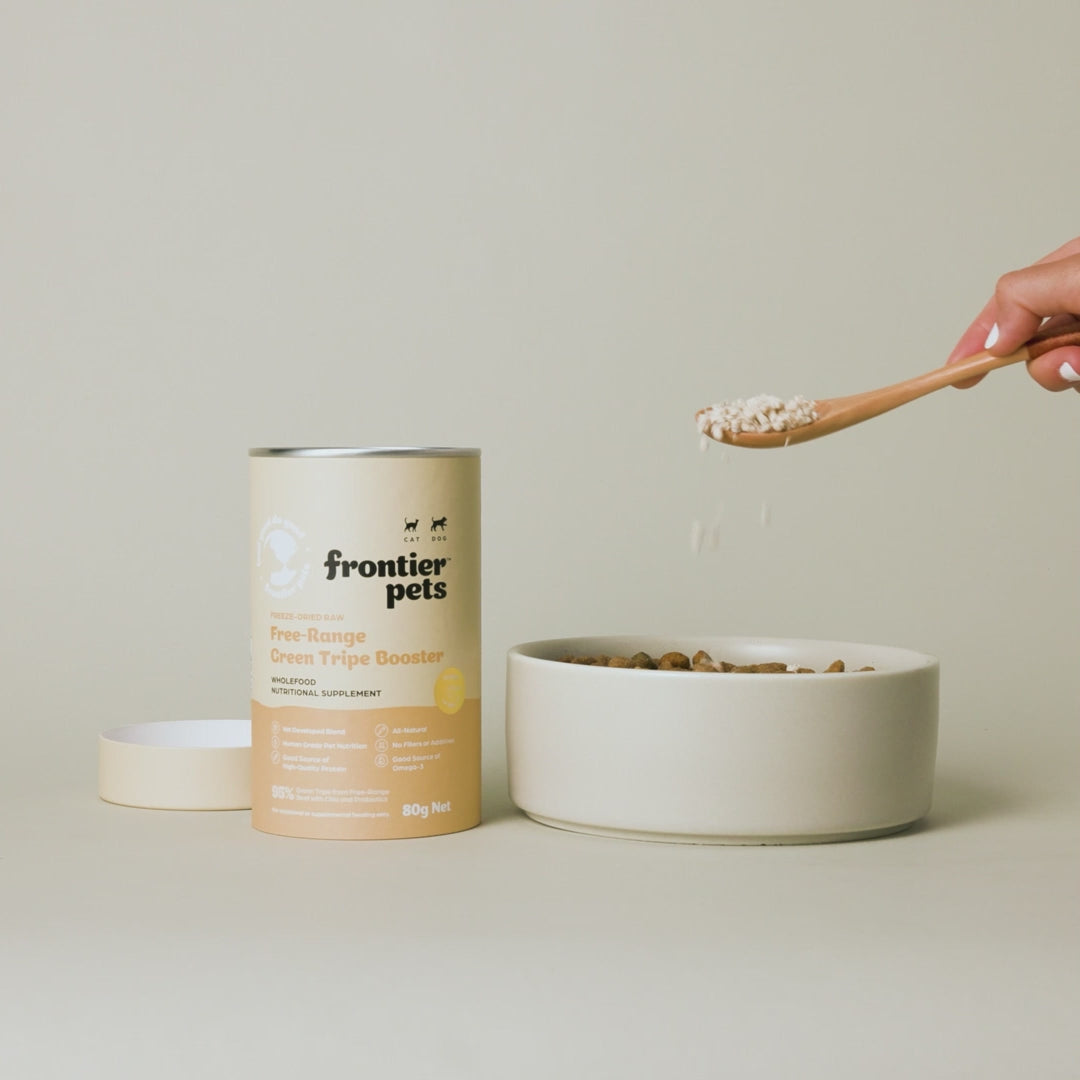What is BARF and Why is it Beneficial for Your Pet?

If you're exploring natural diets for your pet, you may have come across the BARF diet. BARF stands for Biologically Appropriate Raw Food (or Bones and Raw Food), designed to mimic the diet of dogs and cats in the wild. It consists of raw meat, bones, organs, and plant matter, promoting a more natural and nutrient-dense feeding approach. But what makes BARF unique, and what should you consider before adopting it?
What Qualifies as a BARF Diet?
A BARF diet is made up of raw, whole foods like muscle meat, bones, organ meats, vegetables (mostly green) and small portions of fruits. These health-promoting ingredients closely match what pets would naturally consume in the wild, without the processing, additives, or preservatives found in most commercial pet foods.
Is There a Standard for BARF Diets?
While there is no official regulatory standard, it’s important to ensure that BARF meals are nutritionally balanced. Consulting with a pet nutritionist or holistic veterinarian can help provide guidance on creating meals that meet your pet’s unique needs.
The History of BARF
BARF was popularised in the 1990s by Australian vet, Dr. Ian Billinghurst. He believed that processed foods were contributing to health issues in pets, and advocated for raw feeding to reflect their evolutionary diet. This concept has gained global recognition as pet parents seek healthier, more natural diets.
The Benefits of BARF
A key benefit of a BARF diet is improved digestion, as raw meats are highly digestible for dogs and cats, leading to smaller, firmer stools. Raw food also offers better nutrient bioavailability than cooked foods, where heat can reduce nutrient levels. Additional benefits include healthier skin and coat, stronger teeth and gums, support for weight management, increased energy, boosted immunity, and prevention of premature aging.
Since raw foods retain more nutrients and enzymes, many pet parents report increased energy, reduced allergies, and overall vitality in their pets.
Choosing the Right BARF Diet
When choosing a BARF diet, look for fresh, high-quality ingredients sourced from reputable suppliers, like Frontier Pets. You can also prepare homemade BARF meals, but it's important to do so under professional guidance to ensure your pet receives balanced nutrition. Consulting with a pet nutritionist or holistic veterinarian will help ensure the diet is appropriate for your pet’s specific needs, promoting a safe and healthy transition.
Final Thoughts
Incorporating a BARF diet can offer numerous benefits for your pet, promoting their overall health and well-being by aligning with their natural, evolutionary dietary needs. From improved digestion to a shinier coat and stronger immune system, the BARF diet provides essential nutrients in their most bioavailable form. Whether you choose to buy pre-made BARF meals or prepare them at home, it’s important to ensure the diet is balanced and suited to your pet’s specific needs. With professional guidance, you can provide your pet with a diet that helps them thrive naturally.
References & Additional Resources:
-
Billinghurst, I. (2001). The BARF diet: Raw feeding for dogs and cats using evolutionary principles. Dogwise Publishing.
-
Billinghurst, I. (1993). Give your dog a bone: The practical commonsense way to feed dogs for a long healthy life. Warrigal Publishing.
-
Craig, J. M. (2019). Raw feeding in dogs and cats. Companion Animal, 24(11). https://www.ruthhatten.com/podcast/episode/2920b7b0/nutrition-its-absurdly-simple
-
Hatten, R. (2024). Natural pet diets: A scientific exploration. Ruth Hatten. https://www.ruthhatten.com/post/natural-pet-diets-a-scientific-exploration
-
Hatten, R. (2023). Vegies: Does your pet need them? Ruth Hatten. https://www.ruthhatten.com/post/vegies-does-your-pet-need-them
-
Hatten, R. (2022). What are you feeding your pet? Ruth Hatten. https://www.ruthhatten.com/post/what-are-you-feeding-your-pet
-
Hatten, R. (2020). What are the 6 common mistakes when raw feeding your cat or dog? Ruth Hatten. https://www.ruthhatten.com/post/what-are-the-6-common-mistakes-when-raw-feeding-your-cat-or-dog
Related articles

Holiday Pet Safety Tips: Keep the Festivities Furry-Friendly!
The holidays are a time for joy, laughter, and way too many treats (for humans AND pets, right?). But while you're enjoying the festive season, don't forget to keep your furry friends safe and str...
Read more
The Nutritional Advantages of Freeze-Dried Pet Food Compared to Kibble: A Complete Guide
As pet parents become more discerning about what goes into their pets’ bowls, freeze-dried pet food has gained a strong reputation for delivering quality and health benefits. But how does freeze-dr...
Read more
What is BARF and Why is it Beneficial for Your Pet?
If you're exploring natural diets for your pet, you may have come across the BARF diet. BARF stands for Biologically Appropriate Raw Food (or Bones and Raw Food), designed to mimic the diet of do...
Read more









